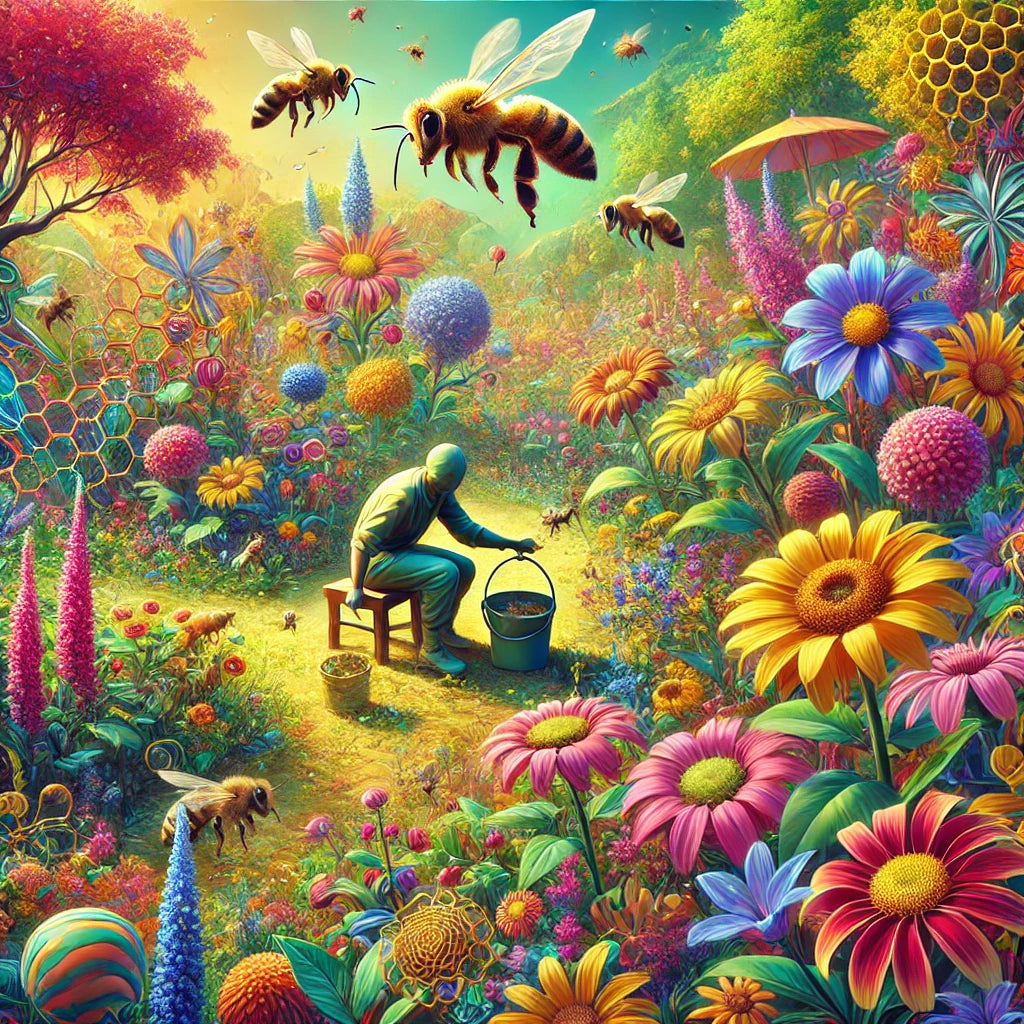Planting flowers is one of the easiest and most rewarding ways to support pollinators like honey bees. Not only do flowers beautify your garden, but they also provide essential food sources for bees, contributing to pollination and honey production.
As bees visit flowers to gather nectar and pollen, they help plants reproduce by transferring pollen from one flower to another. If you want to help bees and improve your garden, learning how to plant a flower is a great place to start.
Plus, your efforts could inspire others, perhaps even leading you to share your thoughts in surveys where you can discuss topics like bees, gardening, and the environment.
Steps to Plant a Flower to Help Honey Bees
-
Choose Bee-Friendly Flowers
Selecting flowers that are rich in nectar and pollen is crucial for supporting honey bees. Opt for native wildflowers or varieties known to attract pollinators, such as lavender, sunflowers, and coneflowers. These plants provide an abundance of food for bees, especially during the foraging season. -
Prepare Your Soil
Good soil is key to healthy flowers. Ensure your soil is well-drained and nutrient-rich by adding organic compost or manure. This will create an ideal environment for your flowers to grow and flourish. -
Plant at the Right Time
Plant your flowers during the spring or early summer when temperatures are mild and the risk of frost is minimal. This allows your flowers to establish strong roots and ensures they bloom during peak honey bee activity. -
Water Properly
Water your flowers regularly, especially when they’re first planted. Once established, most bee-friendly flowers require minimal watering. However, it’s important to keep an eye on the soil moisture to avoid drought stress. -
Avoid Harmful Pesticides
Chemical pesticides can be harmful to bees. Opt for natural pest control methods or insect-repellent plants that won’t deter bees from visiting your garden.
By following these steps, you not only create a beautiful garden but also contribute to the broader ecosystem by supporting bee populations. These essential pollinators are responsible for producing honey and keeping our food systems running smoothly. This is why honey bees are so vital to agriculture.
How Bees Use Flowers to Make Honey
Bees visit flowers to collect nectar, which they convert into honey. As they travel from flower to flower, they also collect pollen, which serves as a protein source for the colony. The more flowers you plant, the more diverse the nectar sources for bees, leading to higher-quality honey production.
The act of planting flowers directly supports the life cycle of bees, as it provides essential resources for brood rearing and colony health. By creating a bee-friendly garden, you're helping ensure the sustainability of local bee populations.
Support Bee Health with Swarm Commander
Planting a flower garden can have a profound impact on honey bee populations. By selecting bee-friendly flowers, preparing your soil, and maintaining a healthy garden without the use of harmful pesticides, you provide an essential food source for these important pollinators. Whether you're a beginner gardener or someone passionate about helping bees, taking simple steps in your backyard can make a big difference.
Help ensure a thriving bee population by taking steps to protect and support your hive. Visit Swarm Commander for products like bee trap attractants and beetle traps for beehives to keep your bees healthy and productive.
Frequently Asked Questions About Planting Flowers and Bee Health
Q1. What flowers are best for attracting honey bees?
Native wildflowers, lavender, sunflowers, and coneflowers are all excellent choices for attracting honey bees. These flowers are rich in nectar and pollen, which provide essential nutrients for bees. Benefits of bees include increased pollination and improved garden health.
Q2. How does planting flowers benefit honey production?
By planting flowers that bees love, you provide a rich source of nectar for them to turn into honey. More flowers in your garden mean more honey bees can collect nectar, ultimately supporting honey production in the hive.
Q3. Can I plant flowers in small spaces to support bees?
Yes, even small flower gardens, window boxes, or pots can make a big difference in supporting bees. As long as you choose bee-friendly plants, you can create a habitat that provides bees with the resources they need.
Q4. How do pesticides affect honey bees?
Many chemical pesticides are harmful to honey bees and can disrupt their foraging behavior or even cause death. Opt for natural pest control methods or plants that repel pests without harming bees. How to start a bee farm safely includes protecting your bees from harmful chemicals.
Q5. How does planting flowers support the life cycle of bees?
Flowers provide nectar and pollen, which are essential for brood rearing and the overall health of the hive. By planting flowers, you are directly supporting the life cycle of bees, ensuring the sustainability of local bee populations.



